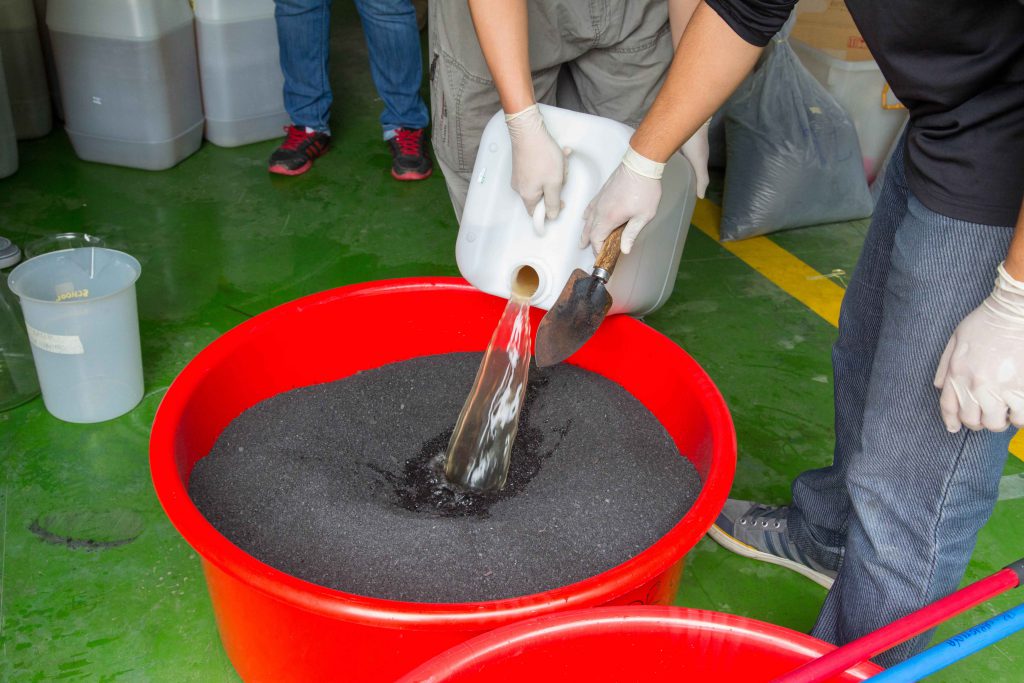
January 19, 2018, by Communications
Ganoderma: A Basal Stem Rot Disease
Representing a type of mushroom, Ganoderma boninense causes basal stem rot, the most devastating disease affecting oil palm in the last 50 years. The incidences and severity of the disease are so widespread it affects almost all plantations, with some recording up to 90 percent of incidence within the first year of planting oil palm.
Integrated management of BSR with Fertiliser
The Centre of Sustainable Palm Oil Research (CESPOR) is part of the University of Nottingham Malaysia, where a part of its focus is research to eliminate waste in the palm oil industry. One of the approaches the centre takes to achieve its goal is to recycle the biomass waste which is a by-product of the manufacturing process which is then recycled into bio-fertilisers using the waste. According to Christina Supramaniam, an academic from the School of Bioscience, the importance of this process is to reduce the utilisation of large amounts of chemicals on the crops annually, as this affects the biodiversity of the environmental area and the health of the soil resulting in a lower yield of fresh fruits.
The project that focuses on the development of bio-fertiliser containing live microbes, the bio-organisms are aimed to neutralise the harsh chemicals and return the balance of carbon residue and biodiversity of soil flora and fauna. The project has also seen promising results where significant improvement is seen in regards to yield and soil condition after one year into the testing phase.
However, Christina also explains that this natural solution that includes the use of microorganisms is currently being used and backed by large stakeholders in the industry, however, the process lacks scientific legitimacy which results in an uncertainty on whether the process has any concrete effects.
How does it work?
The process is done in four stages, due to the difference in performance in a laboratory and on the field. The first and key stage started in 2011, where multiple microorganisms were screened to ascertain its antagonistic effects on Ganoderma. The second stage involves the selected samples in the formulation; the process which includes the mixture, proportioning and mixing of the right amount of nutrients to ensure the stability of the product, the resulting enzyme is then mass produced carefully in stage three to ensure consistency. The last and fourth stage then involves the microorganisms, which have been ascertained to not deteriorate in six to eight months in both quantity and quality, are then incorporated into a bio-fertiliser, an organic compost from the oil palm mill. The product is then monitored for its shelf life period as well.
The end product is then periodically implemented in several chosen palm oil estates for the duration of three years. Regular checks between three to four months are conducted to analyse certain set conditions that include the leaves, soil, yield, environmental factors, and general health of the plants. The project will take approximately three years and will potentially be able to be legitimately recommended as the end product to be used as a control agent for the Ganoderma disease.
For more information, please Christina Supramaniam
Visit the School of Biosciences blog for more information.
-
Post a comment


